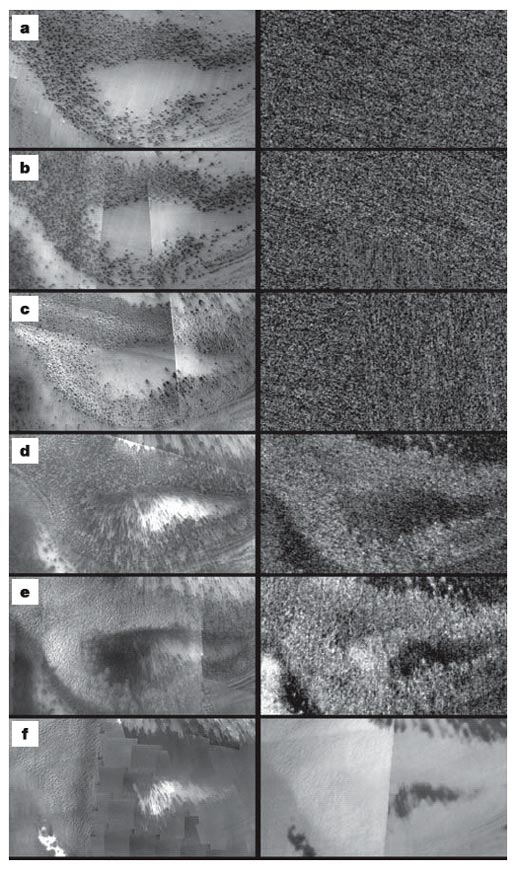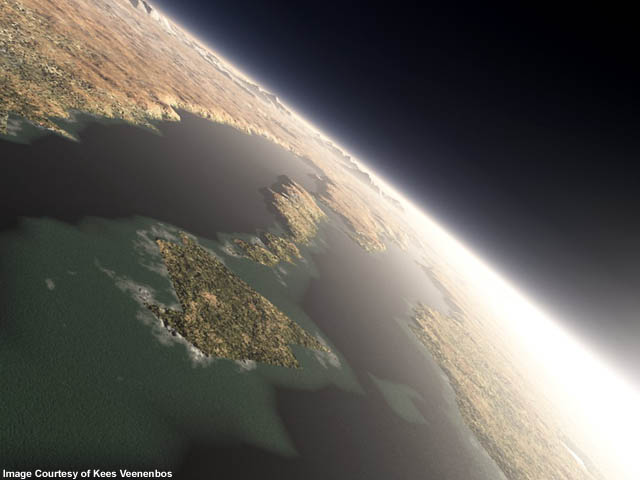|
The Enigmas on Mars |
|||
|
The Case of the Black Spots .
The Blue Bird Files
Posted by blue bird, on April 11, 2007 at 04:47 GMT (ID:3106433) Regarding DARK SPOTS on Mars south pole, I also found information that 3 Hungarian scientists (Planetarium and the Institute for Advanced Study, Budapest) who were searching through over 60 000 photos from MGS, claim the following: Excerpt; In 2001, three Hungarian researchers, Tibor Ganti, Eoers Szathmary, and Andras Horvath from the Planetarium and the Institute for Advanced Study, Budapest, claimed to have found evidence of vegetation in some of the Mars Global Surveyor (MGS) images. Large groups of dark spots in craters in the south polar region of Mars (see photo) which spread every Martian spring could prove there is life on Mars, they said. The team studied 60,000 photographs taken by MGS before concluding that the organisms lived by photosynthesis. "The organisms live between the surface of Mars and a thick ice cover that isolates them extremely well from Martian temperatures of around -120°C," said Ganti. "When the spring comes and light penetrates the ice, these organisms absorb the energy of light and warm up themselves. Under the ice, temperatures rise to slightly above 0°C. A thin inner layer of the ice melts, thus creating the conditions of life. In the summer, when the whole ice cover melts and the water evaporates, they dry out again," he said. The dark spots start spreading in the spring, varying from 10 meters to several hundred metres in diameter. "The organisms could be algae or lichen at the most, similar to organisms that can be found on tundra close to the earth's North and South Poles," according Ganti. However, other, non-biological explanations have been put forward. For example, it has been noted that images taken by the Giotto probe showed that the black color of cometary nuclei is formed when a mixture of carbon and water ice is exposed to ultraviolet radiation. For another possible non-biological interpretation, go here.
Three separate researches ( European
Mars Express orbiter,
a team from NASA Goddard Space Flight Center using
several large telescopes,
and a team led by Vladimir Krasnopolsky using the
Canada-France-Hawaii
Telescope) confirmed METHANE in Mar's atmosphere -
methane on Earth is
mainly produced from bacteria and volcanic
activity... maybe rover will
try to get closer look and find the source of
methane.
Posted by blue bird, on April 11, 2007 at 05:44 GMT (ID:3106485) More: Trees
on
Mars? Updated
Page (On File)
Quick
Time
Movie (On File)
Posted by blue bird, on April 11, 2007 at 16:36 GMT (ID:3107720) quote:
SuicideVirus
Vegetation in cold areas - what about Siberian TUNDRA ? quote:
SuicideVirus
I can clearly see the shadows here. There is really a lot of mystification going on about images - like it is coming from some other dimension - don't buy it any more that easily.. http://marsanomalyresearch.com/evidence-reports/2001/019/1-treesfew-67k.jpg
PEGASUS ADDITION Life on Mars Hopes Raised 5 April, 2002
Excerpt Scientists have found "intriguing" new evidence that may indicate there is life on Mars. An analysis of data obtained by the Pathfinder mission to the Red Planet in 1997 suggests there could be chlorophyll - the molecule used by plants and other organisms on Earth to extract energy from sunlight - in the soil close to the landing site. SOURCE: BBC News (On File) |
|||
|
|||
|
|||
|
|||
|
|||
|
|||
| Posted by ArMaP, on April 18, 2007 at
17:19 GMT (ID:3126492)
From the images published today
(2007/04/18) from HiRISE:
You can get the full 515.4 MB JPEG 2000 image from here. PS: maybe it's some more of that blue dust that can be seen in some places? Dust Fans on the Seasonal Carbon Dioxide Polar Cap Excerpt During the long dark night of Martian winter at the south pole, carbon dioxide (CO2) in its solid form (also known as "dry ice") accumulates and forms a seasonal polar cap. HiRISE is currently observing southern spring on Mars. As the sun comes up in the spring, the ice evaporates in a complex way. HiRISE image PSP_003180_0945 shows dark dust being blown across the seasonal south polar cap. The dust comes from the surface beneath the ice: it either starts at spots bare of ice, or it's possible that it's lofted from below the ice in geyser-like plumes. Local winds blow the dust from its source, forming a long fan. When the wind changes direction, a new fan is formed, pointing in the new direction |
|||
| Posted by blue bird, on April 19,
2007 at 10:23 GMT
(ID:3127999)
Joseph Skipper updated site on mars "vegetation".....see for yourself: NASA:
Same images from Skipper:
http://www.marsanomalyresearch.com/evidence-reports/2007/117/06-117-bottom-color-1.4x.jpg Source: Skipper |
|||
| Posted by Karilla, on April 23, 2007
at 09:57 GMT
(ID:3137440)
I would just like to point out that there is nowhere on Earth where researchers have FAILED to find life. In South America there are springs that come up through a plateau of rock riddled with sulphur dioxide emitting vents. The water that comes up to ground level is basically sulphuric acid. And it is full of microbial life. There are deep sea vents that are surrounded with wormlike creatures (a few feet in length) that survive purely by converting the chemical energy coming from the vents into sugars. No sunlight, no oxygen and temperatures ranging from bloody cold to a couple of hundred degrees C over their body length (the vent gasses are extremely hot but don't heat the surrounding water much). If we find life absolutely everywhere we look on this planet, why should Mars be any different. I find it impossible to believe that this is the only speck in the galaxy, let alone the universe as a whole, where life can be found. |
|||
| Posted by theutahbigfoothunter, on
April 23, 2007
at 11:54 GMT (ID:
Many people who have a lot of experience agree that other planets have vegetation. For example: Mr. John Lear posted this recently... "There is an abundance of vegetation on the far side which can be seen on numerous photos that have been posted in John Lears Moon Photos on ATS and thelivingmoon.com. NASA was very careful to limit the photos available in color to the public to avoid giving them the impression that this might be true. But careful examination of the pictures that we have posted will reveal the fact that there is vegetation." - John Lear Although I do suppose Mars could be different, I don't know why . |
|||
| Posted by blue bird, on April 23,
2007 at 13:20 GMT
(ID:3137885)
Excerpt "I'm quite serious when I say have a really good look at these new Mars images," he told an audience last month gathered at the Smithsonian's Air and Space Museum. Talking via phone from his residence in Sri Lanka, Clarke said signs of vegetation seem apparent. One image showed what appeared to him looking like Banyan trees, he said. Clarke is referring to this image... And than you have the 'answer' - 'spiders' radial "branching" formations : Excerpt In this paper we define and describe morphological features that have colloquially been termed "spiders" and map their distribution in the south polar region of Mars. We show that these features go through a distinct seasonal evolution, exhibiting dark plumes and associated fan-shaped deposits during the local defrosting of the seasonal cap. We have documented the seasonal evolution of the cryptic region and have found that spiders only occur within this terrain. These observations are consistent with a geyser-like model for spider formation. Association with the transparent (cryptic) portion of the seasonal cap is consistent with basal sublimation and the resulting venting of CO2 gas. Also consistent with such venting is the observation of dark fan-shaped deposits apparently emanating from spider centers. Spiders are additionally confined to the polar layered deposits presumably due to the poorly consolidated and easily eroded nature of their upper surface. * 'spiders':
Btw. 'big' trees - Earth rainforest 300 million years old: Excerpt A spectacular fossilised forest
has transformed
our understanding of the ecology of the Earth’s
first rainforests. It is
300 million years old.
Added by Zorgon...
|
|||
| Posted by blue bird, on April 23,
2007 at 13:51 GMT
(ID:3137896)
A new test for the presence of vegetation on Mars depends on the fact that all organic molecules have absorption bands in the vicinity of 3.4 . These bands have been studied in the reflection spectrum of terrestrial plants, and it is found that for most plants a double band appears which has a separation of about 0.1 and is centered about 3.46. Spectra of Mars taken during the 1956 opposition indicate the probable presence of this band. This evidence and the well-known seasonal changes of the dark areas make it extremely probable that vegetation in some form is present. Chlorophyll
detected at Mars
Pathfinder landing site?
Excerpt The Second Astrobiology Science Conference begins at NASA Ames Research Center on April 7 and surely one of the most intriguing announcements to be made is of the suggested possible detection of chlorophyll at the Mars Pathfinder landing site. These results, to be presented at the poster session by Carol Stoker and Pascal Ashwaden, both of NASA Ames, are summarized in the following abstract from the Conference proceedings: The Superpan, an image product from the Pathfinder lander camera, is a multispectral panorama of the Pathfinder landing site acquired in 15 wavelengths in the spectral range 440-1100 nm. We have performed an automated search of the Superpan image cubes for the spectral signature associated with chlorophyll. First, images were calibrated to radiance values and then the multispectral images were co-registered to subpixel accuracy. An automated pixel-to-pixel search was performed on a 3-filter set of images (530 nm, 670 nm, 980 nm) to identify pixels where the following condition was met: 530 nm > 670 nm, and 980nm > 670 nm. Thus, we searched for the spectral signature associated with red light absorption by chlorophyll. When this case was met by the search routine, we plotted a full spectrum for the involved pixels and carefully examined the images. The condition was met for small areas in six image cases. All of these cases occur in near field images, where resolution is highest. Four of the cases occur on the spacecraft and appear to be associated with spacecraft structure. Two intriguing cases occur in small areas on the ground near the spacecraft. SOURCE: David Darling (On File) |
|||
| Posted by zorgon, on April 24, 2007
at 21:17 GMT (ID:3142095)
quote:
Originally posted by
zeeon
AH so your an anti NASA person eh? Well its interesting but in this link bluebird provided there is this comment: Water Ice Discovery on Mars May Be 'Tip of an Iceberg' Excerpt Scientists are reporting this week detailed evidence for vast amounts of water ice just beneath the surface of Mars. The finding, which confirms preliminary data released earlier this year, should help answer an age-old question regarding where ancient Mars' water went, and it is likely to fuel greater interest in probing the Red Planet for signs of life. The new data, provided by the Mars Odyssey spacecraft, will be reported in Friday's issue of the journal Science. The findings were embargoed for release Thursday afternoon, but some news outlets in the U.S. and Britain reported on them last week and over the weekend. The journal lifted the embargo this morning. SOURCE:Space.com (On File) So here is absolute proof that the scientists do have info, but the info is embargoed until someone decides to release it. Now THAT is as interesting as the new discovery of under ground water in this release... |
|||
| Posted by zorgon, on April 24, 2007
at 17:15 GMT (ID:3141510)
quote:
Originally posted by
thedangler
Great Idea! Why don't you? Well we did... and they do... Here is Wayne Newtons backyard (this
is the guest house)
|
|||
| Posted by zorgon, on April 24, 2007
at 21:36 GMT (ID:3142107)
quote:
Originally posted by
laiguana
So have I and I have written letters to ask and no response. It seems official sources are refusing to make ANY comment on the images, yet on the "face" issue they did not hesitate to speak up in denial, even though it was NASA who first publicized the "face" to gain common support... Nothing suspicious in that... move along folkes.. nothing to see here... quote:
Originally posted by
laiguana
Mentioned a reason in the last post... seems they embargo news releases... I wonder how long and how far reaching that practise is? |
|||
| Posted by blue bird, on April 28,
2007 at 06:32 GMT
(ID:3150774)
* Brasilian forest: IMAGE * Mars: IMAGE |
|||
| Posted by blue bird, on April 28,
2007 at 06:54 GMT
(ID:3150817)
quote:
Originally posted by
ArMaP
*rocks springing out , they say - mixed with dust.... But, there is article in Nature saying that these spots bear VERY WEAK signature of CO2. Sand Geysers Could Explain Mystery Spots on Mars 16 August 2006
Excerpt But the authors of a second study in the same issue of Nature question whether the conditions for forming such jets exist in the areas where the spots are seen. Yves Langevin of the Institut d'Astrophysique Spatiale in Orsay, France, and his colleagues base their argument on observations by the European Space Agency's Mars Express spacecraft. They point out that the areas where the spots appear are "characterised by very weak signatures of CO2 ice, which are not consistent with a thick transparent slab of CO2 ice". This means that whatever CO2 ice is present must be buried beneath the surface, making the jets hard to produce, they say. Christensen says this is entirely consistent with his team's model. The Mars Express observations were made in the Martian southern hemisphere's late spring, by which time the jets would already have been active for about 30 days, he says. The jet activity would have coated the surface of the ice with lots of sand and dust, leading to the weak CO2 ice signal. Langevin and his colleagues also question why the spots and spiders do not appear in other places in the south polar cap where Mars Express clearly detects CO2 ice. Christensen says the jets require a combination of things to form, including clear, dense ice and underlying sand. “I can imagine that the conditions wouldn't always be just right for them to form,” he counters. SOURCE: NewScientist.com
News
Service (On File)
|
|||
|
Storms on Earth and Mars Posted by blue bird, on April 28, 2007 at 07:15 GMT (ID:3150838) quote:
Originally posted by
ArMaP
Are we looking at photos with the same resolution? Is the photo from Mars closer than the photos from the Amazon forest or is it the other way? * images on same scale: Recent Mars and Earth Dust Storms Compared In this figure, we compare a recent
dust storm on Mars
with one that occurred earlier this year on Earth.
The top image shows
a martian north polar dust storm observed on 29
August 2000. This image
is part of the Mars Orbiter Camera (MOC) daily
global map--a low resolution,
two-color view of Mars acquired from pole to pole
every orbit. The storm
is moving as a front, outward from a central "jet,"
and marginal "vortices"
can be seen. In this image it extends about 900 km
(560 mi) out from the
north polar seasonal frost cap. The region on the
right side of the Mars
picture includes the north pole. The bottom image
shows a terrestrial dust
storm, seen in a SeaWiFS image, acquired on 26
February 2000. This storm
exends about 1800 km (1100 mi) off the coast of
northwest Africa near the
Earth's equator. Both images are shown at the same
scale; 4 km (2.5 mi)
per pixel.
Image Source: MGS MOC Release No. MOC2-249, 12 September 2000 |
|||
| Posted by blue bird, on April 28,
2007 at 07:05 GMT
(ID:3150907)
* about “ dust theory“ regarding dark spots: “John Bridges from the Natural History Museum in London argued for an investigation of similar spots found in the northern polar region, pointing out that wind blown dust could have a role in their formation. Rock weathering, though, was dismissed as a cause "because the spots turn from black to white to black again - and you can't reverse weathering," said Ori.“ * and we can see dunes very distinct in appearance - the layer of ice must be unbelievable thin... Excerpt No signature of clear CO2 ice from
the `cryptic' regions
in Mars ...
www.nature.com/nature/journal/ (subscription required) ESA on Martian dark spots - good article Martian
Spots Warrant a Close
Look
Excerpt
Are dark spots that appear near the south pole of Mars in early spring, a sign of life on the Red Planet? No-one can say for sure, according to a group of scientists who met at ESTEC, ESA's technical centre in the Netherlands. But the spots are certainly fascinating, the meeting agreed, and well worth a detailed look by Mars Express, the European Space Agency's Mars mission, when it goes into orbit around the Red Planet in late 2003. Agustin Chicarro, ESA project scientist for Mars Express, called the meeting after the spots began fuelling controversy here on Earth last summer. "As a geologist, I found the spots quite perplexing and very exciting. I wanted to tap a broad spectrum of expert opinion to decide whether they warrant closer examination by Mars Express," he said. SOURCE: ESA (On File) |
|||
| Posted by
spacedoubt, on April
28, 2007 at 15:55 GMT (ID:3151731)
quote:
Originally posted by
blue bird
No, in this
instance I don't
think we are looking at jets.
Or perhaps a
martian version
of "pingos"..Which occur on Earth in permafrost
environments.
|
|||
| Posted by blue bird, on April 28,
2007 at 16:14 GMT
(ID:3151840)
Not a bad idea! I found this bird eye view of an
Arctic pingo - one
collapsed and one not....but we can see, that , if
under white cover -
everything is white including pingo - here on Mars
images we clearly see
dark branching on white soil!?
Click Image for Full Size And - with 'pingos' there must be
liquid water in the
picture because :
Pingo Excerpt A pingo is a mound of earth-covered ice found in the Arctic, subarctic, and Antarctica that can reach up to 70 metres in height and up to 2 kilometres in diameter. The term originated as the Inuit word for a small hill. The plural is 'pingos'. Pingos are a periglacial landform, that is defined as a nonglacial landform or process linked to colder climates. Periglacial landforms often involve frozen ground... Pingos are generally classified as hydrostatic (closed-system) or hydraulic (open-system). Hydrostatic-system pingos result from hydrostatic pressure on water from permafrost, and commonly form in drained lakes or river channels... SOURCE: Wikipedia |
|||
| Posted by blue bird, on April 28,
2007 at 18:21 GMT
(ID:3152086)
*another highly interesting image of
dark spots on
south polar region:
|
|||
| Posted by blue bird, on April 28,
2007 at 19:17 GMT
(ID:3152104)
From Winter------to Spring... how
earthly... how organic
|
|||
|
.
Flyover from the submerged northeast Hellas Planitia to the Hesperia Planum. |
|||
| FAIR USE NOTICE: This page contains copyrighted material the use of which has not been specifically authorized by the copyright owner. Pegasus Research Consortium distributes this material without profit to those who have expressed a prior interest in receiving the included information for research and educational purposes. We believe this constitutes a fair use of any such copyrighted material as provided for in 17 U.S.C § 107. If you wish to use copyrighted material from this site for purposes of your own that go beyond fair use, you must obtain permission from the copyright owner. | |||
|
|
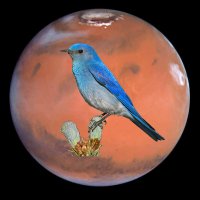
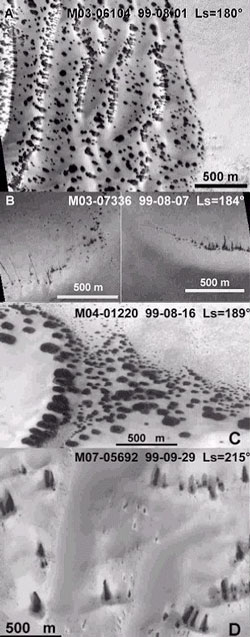
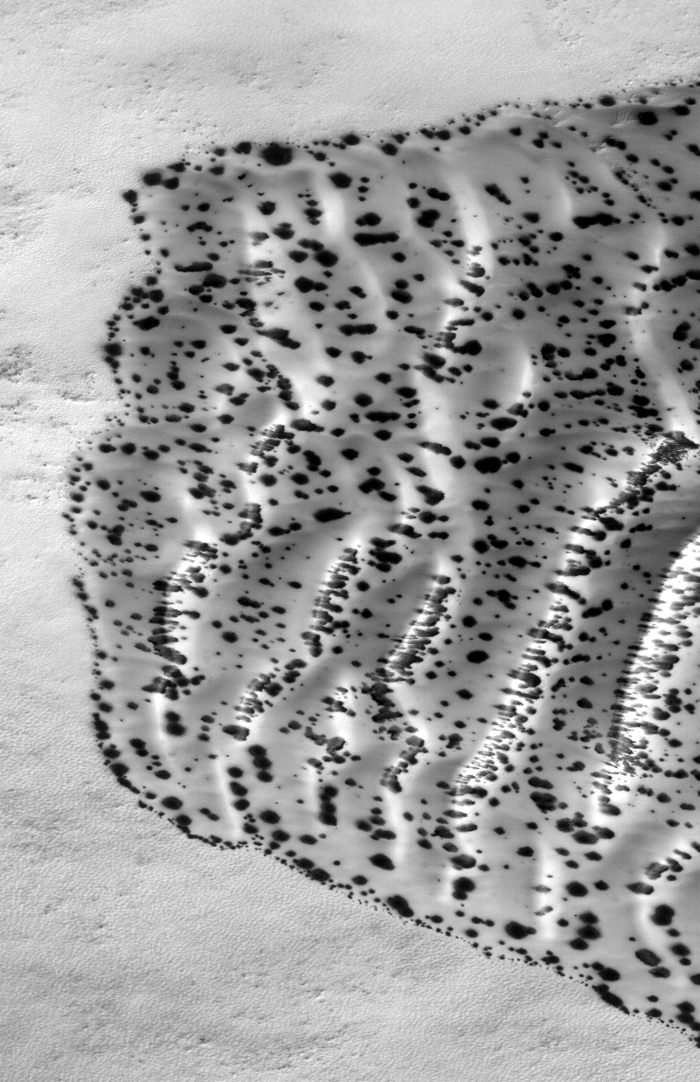
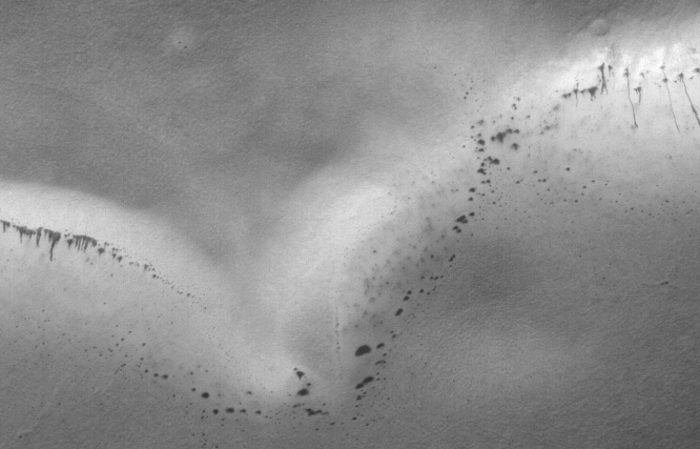
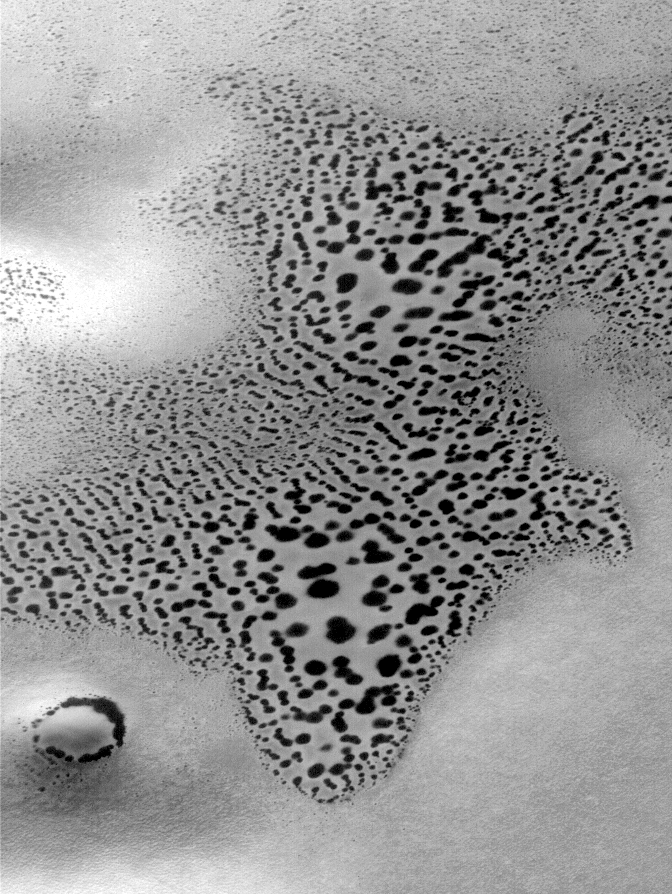
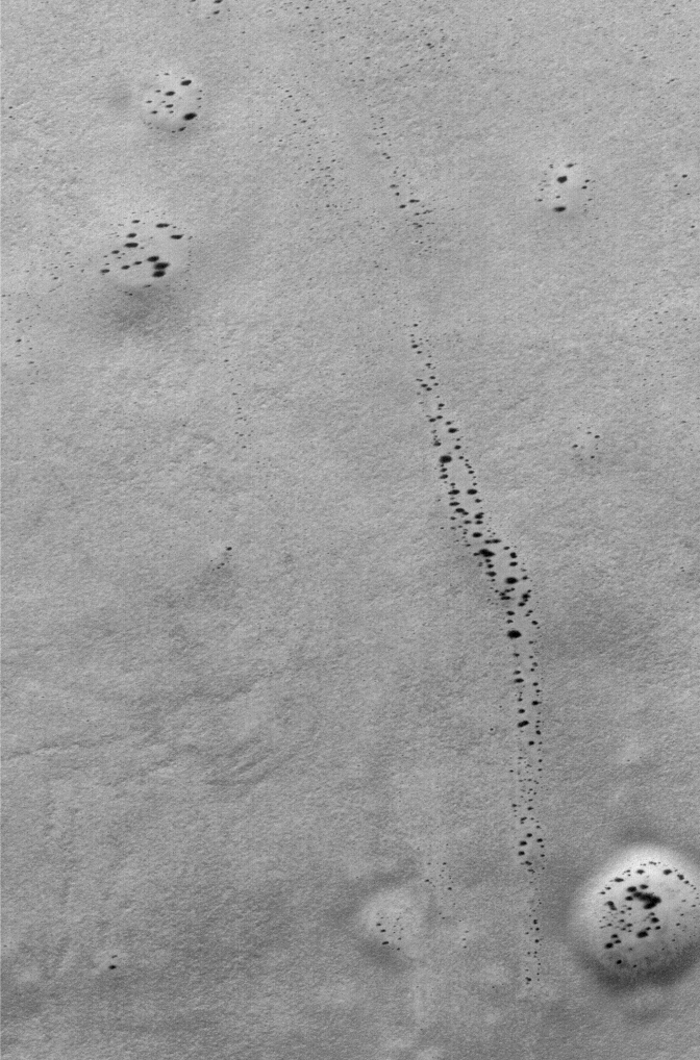
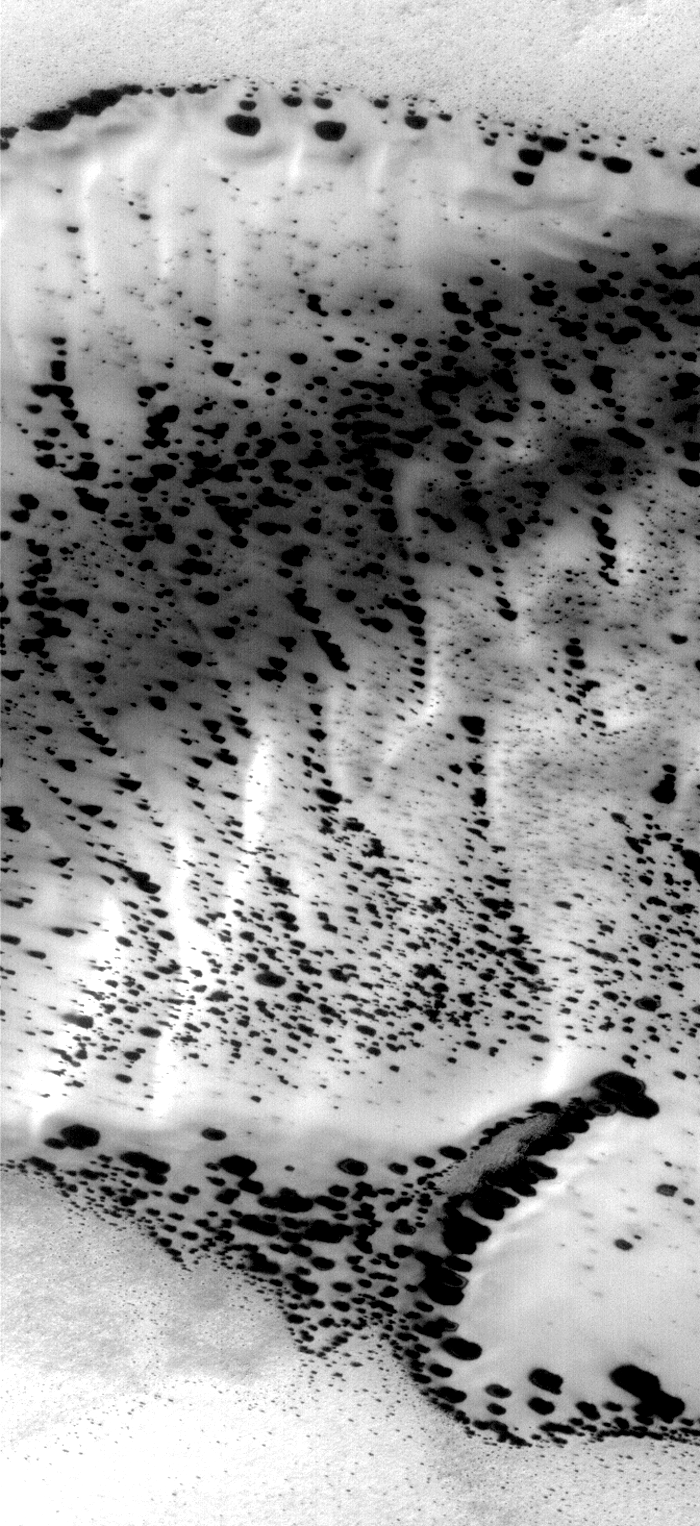
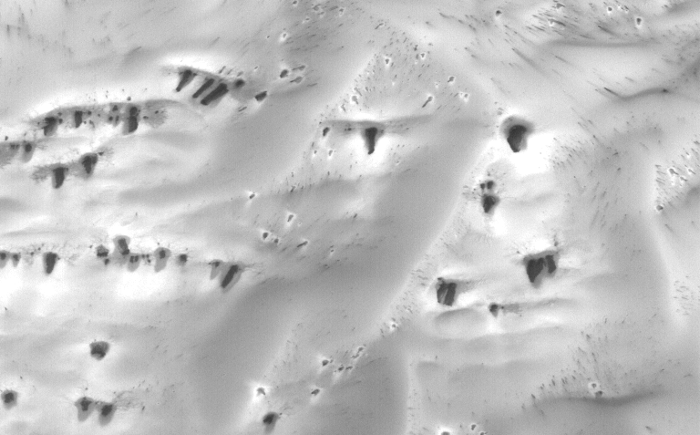
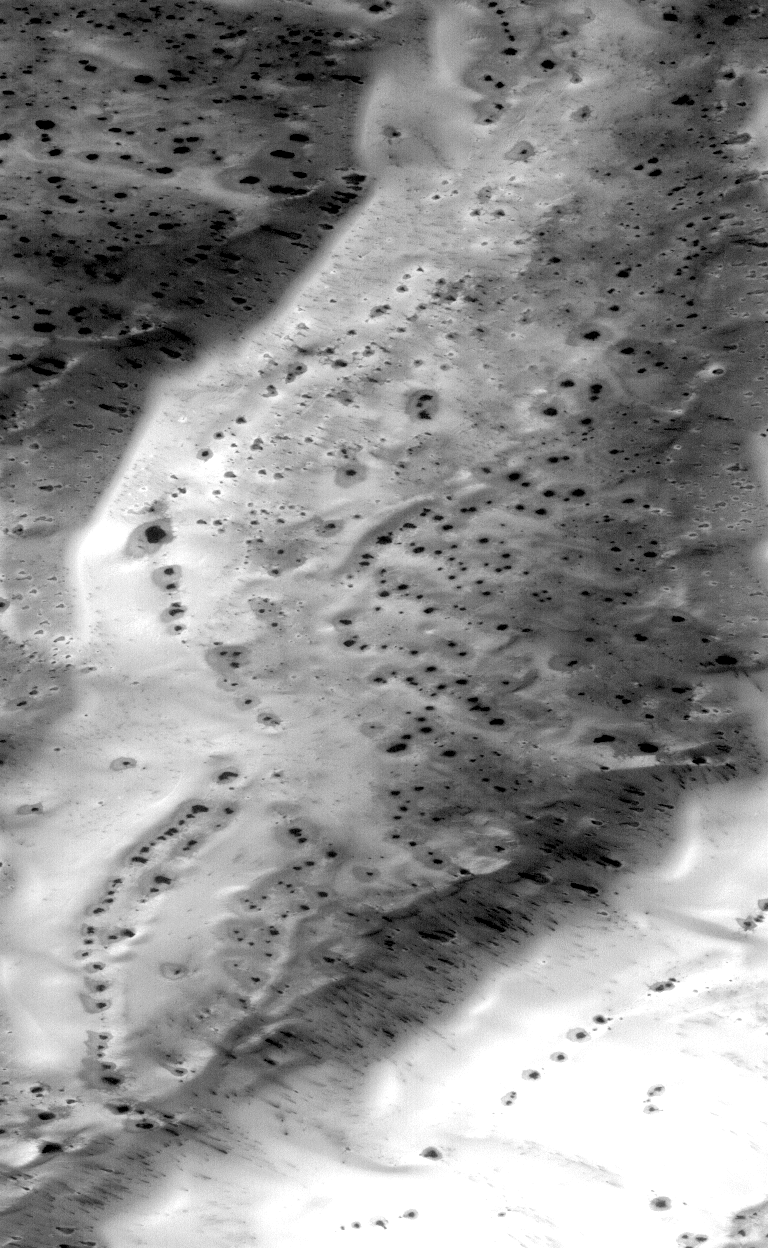
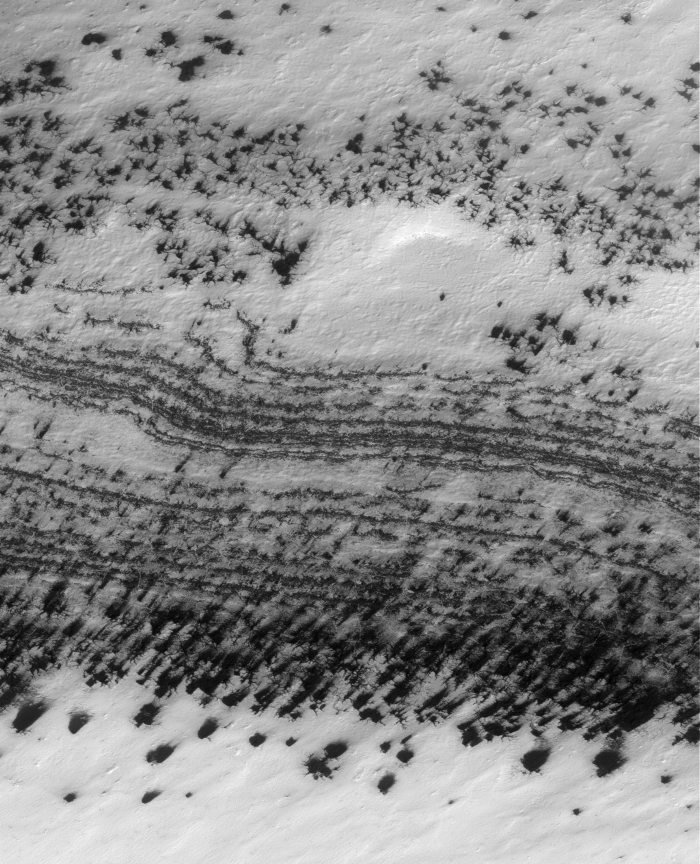
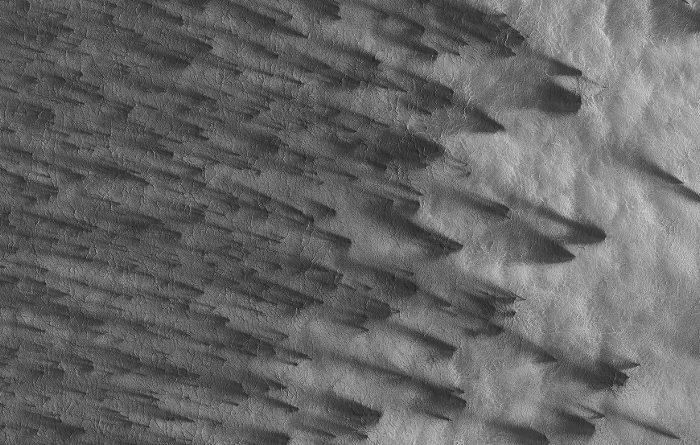
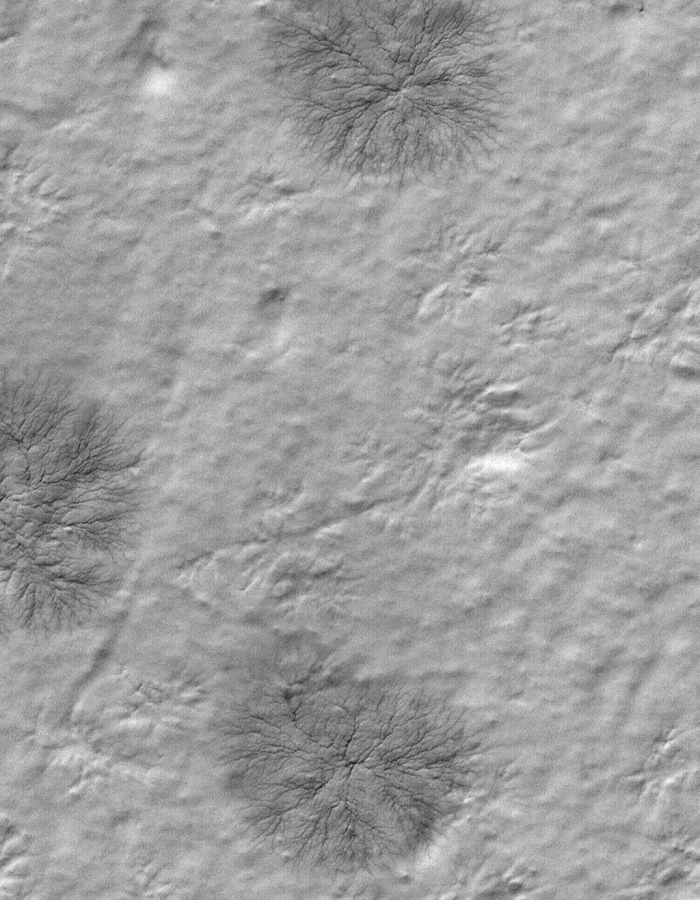
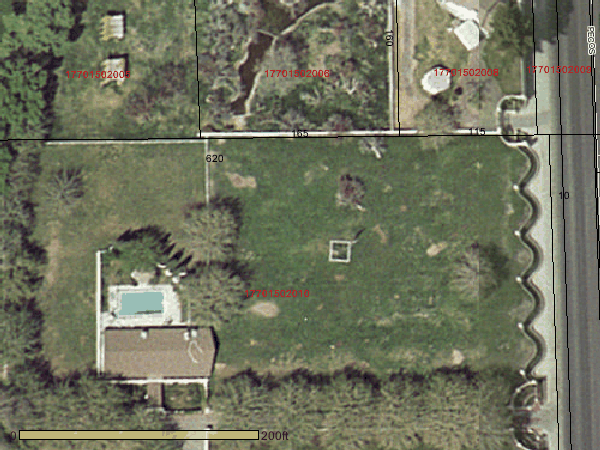
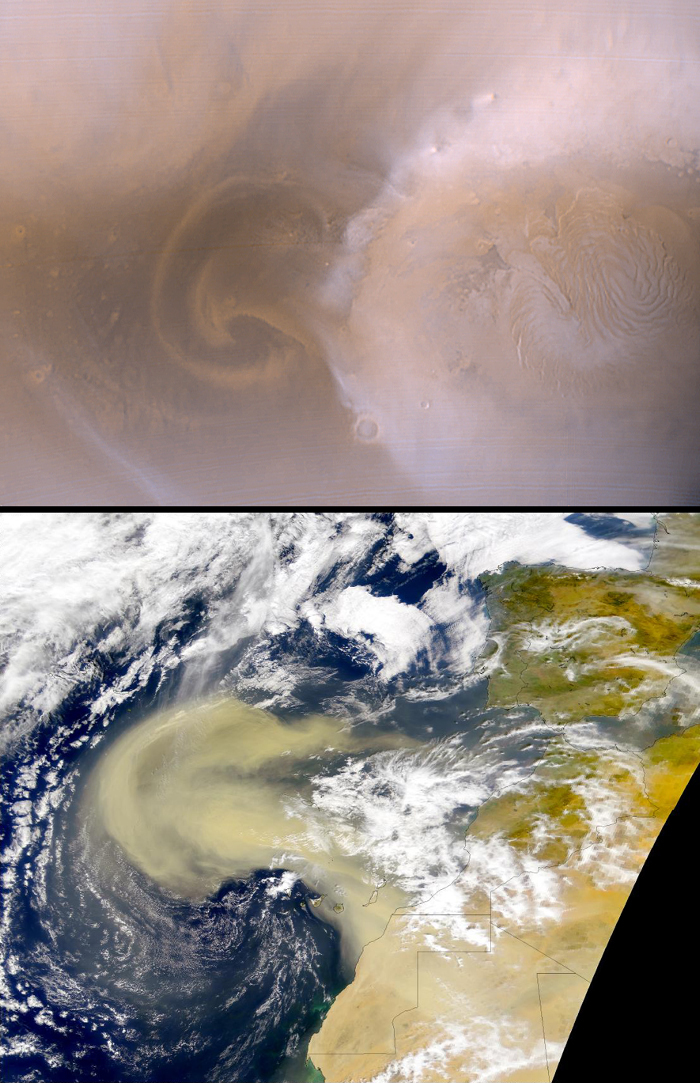
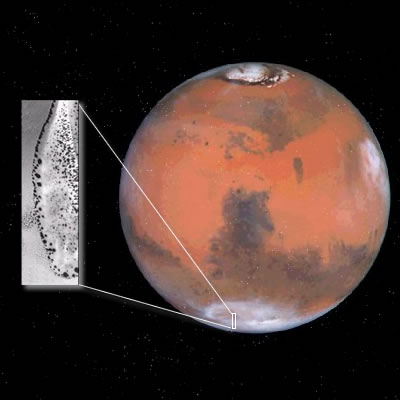
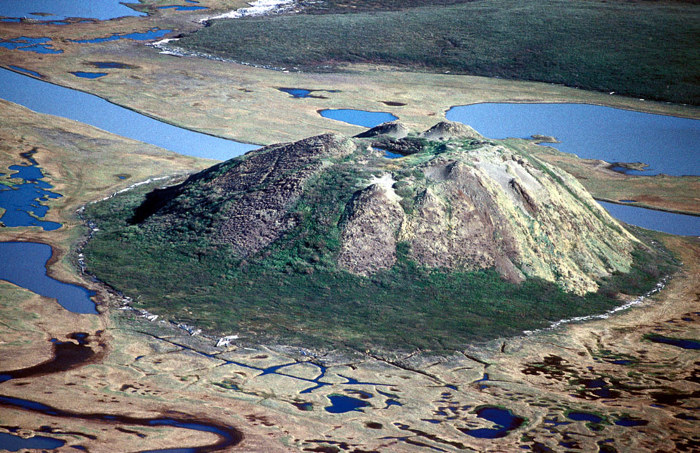
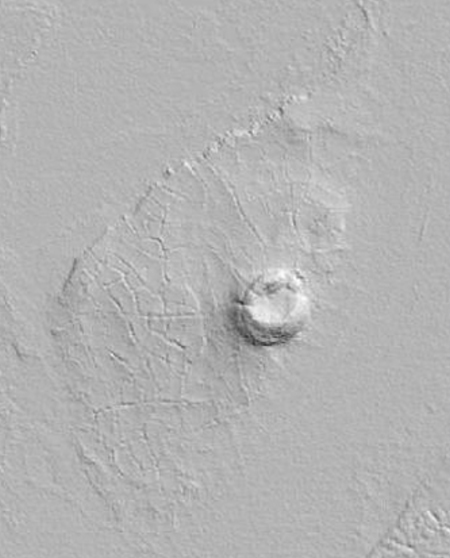
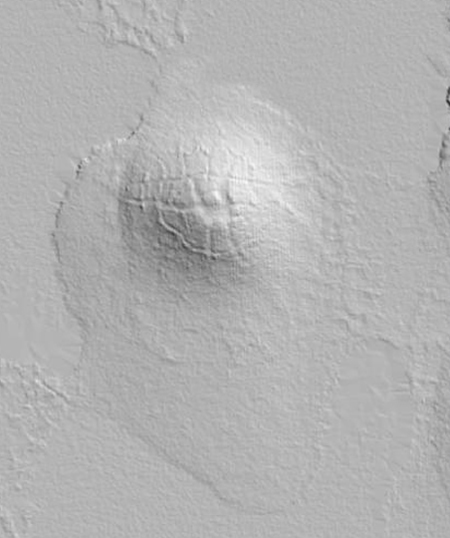
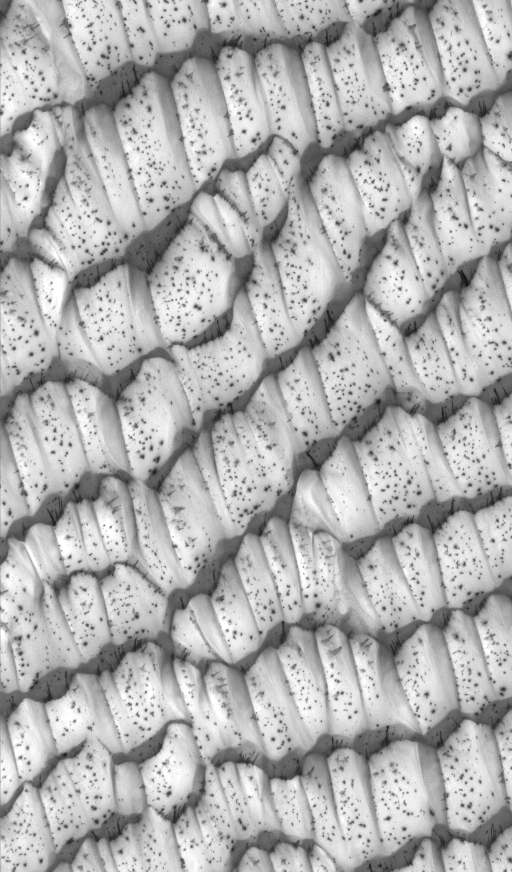 \
\
